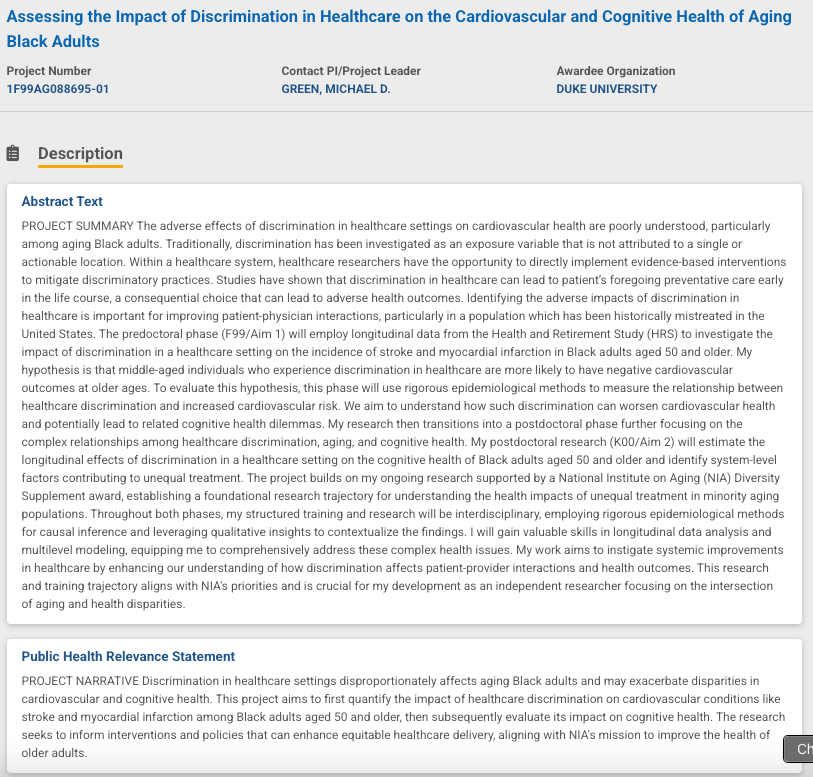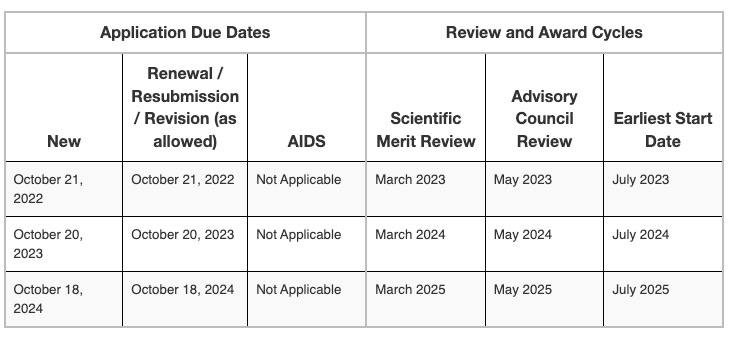When the Funding Floor Collapses
Cutting NIH Training Grants Dismantles Early-Career Research Paths
Receiving the “Transition to Aging Research for Predoctoral Students” (which I will refer to by its activity code, F99/K00) is the pinnacle of my short career by most conventional academic metrics. When I began my PhD journey, I assumed that if you conducted solid science and published in reputable journals, your institution and peers would recognize and value your work. However, in my school of medicine—one that follows a “soft-money” model where individuals must cover their own salaries—publications matter, but bringing in funding matters more. It literally keeps the lights on. Although being awarded an F99/K00 was not my favorite scientific moment, it significantly changed how people perceive my status, the science I will produce, and their overall interest in my work. I am deeply troubled by the growing number of terminated training awards (such as the F31 for PhD students, F30 for MD-PhD students, and F32 for postdocs), which are meant to launch promising early-career scientists. These cuts are not a real cost-saving measure; rather, they undermine the career prospects of emerging researchers.
I want to share some thoughts about my own application process so we can think more critically about our future when training opportunities are reduced. There is talk of “only uplifting legitimate science,” yet my project—and many others now under scrutiny—meets rigorous standards based on extensive planning and repeated review. My grant is still active as of March 28th 2025, but I consider it naive to think any NIH research is safe if decisions are driven by vengeance rather than by honoring the scientific process. By outlining my experience, I hope you all (especially if you have decision making status for training programs) will consider how to support researchers through this tumultuous period and encourage training for innovation in the research process, rather than dismantle it for personal or political reasons.

My award is from the Funding Opportunity Announcement (FOA) Number: RFA-AG-23-016
Funding Opportunity Purpose
The National Institute on Aging (NIA) invites outstanding graduate students from a wide range of broad research areas who are interested in receiving aging-related postdoctoral training to apply to this Funding Opportunity Announcement (FOA)
…
Successful applicants will be awarded the Transition to Aging Research Award for Predoctoral Students, whose purpose is to recruit and retain emerging investigators in aging research. This two-phase award will allow awardees to complete doctoral dissertation projects and provide a variety of training supports to facilitate the smooth transition of doctoral graduates into competitive, aging-focused postdoctoral positions.
The F99/K00 is a unique award, and the concept is innovative. Many biomedical researchers know the K99/R00 (a postdoctoral-to-faculty transition award). The F99/K00 first appeared in 2016 under the National Cancer Institute, with only 36 awarded, compared to 624 F31 (for PhD students) awards and 516 F32 (for postdoctoral scholars) awards that year. The National Institute on Aging (NIA), the NIH institute which issued my award, began offering the F99 in 2020, funding 15 applicants at first. From 2020 to 2023, NIA awarded 39 of 123 - F99 submissions (31.7% success rate). During that period, NIA funded 73 of 239 - F31 submissions (30.5% success rate), and across NIH overall, 962 of 3448 - F31 proposals (27.9% success rate) received funding. 2 years of support for a PhD student or Post-Doc is great, but the transition awards (F99/K00 and K99/R00) give early career scholars an incredible opportunity to build on ideas for 5 years.
Unlike the F31 and F32, the F99 is open to non-US citizens and supports both the predoctoral and postdoctoral phases. Awardees receive funds for the remaining portion of their PhD, followed by salary and additional support for a postdoctoral position. Because of two part structure of the award, as a prospective post-doc you arrive with a baseline amount of support, making the awardee a more appealing recruit and allowing flexibility in the transition. However, it is not widely pursued relative to the other mechanisms to support individual training because applicants must be at a precise stage of their program—often in the third or fourth year, needing only two years to finish. You essentially get one ideal shot at applying, and although resubmissions are possible, the timeline is tight (applications are due in October with the earliest start date in July). Waiting up to two years to secure this award (if you submit and resubmit a year later) is simply not feasible for many trainees.
The entire purpose of the F99/K00 is to facilitate a seamless shift to a postdoc position, which will cumulatively provide five to six years in total (depending on whether one pursues a career development award) of individual support for training. Yet anyone who has gone through a NIH grant submission knows how far from “seamless” it can be, given the lengthy writing, review, and execution stages.
NIH has often been criticized for being slow, favoring well-resourced institutions and high-profile investigators, and accommodating those with the time or support to submit multiple proposals. Although institutional change and thoughtful disruption might be reasonable, the current state of cancellations does not reflect that. It instead is the dismantling of an established system—driven by cultural or political disagreements—threatening the stability on which scientific research depends on for future innovation.
I have witnessed friends and colleagues lose funding under circumstances that are arbitrary, despite the substantial effort required to secure those awards. Many were locked into well-thought training plans, expecting long-term advantages, only to find themselves vulnerable now. Historically, NIH grants were terminated only for serious infractions like plagiarism or data falsification, yet hundreds of grants have been canceled in recent months because the administration no longer prioritizes those scientific areas. The grants were reviewed by subject experts who volunteered their time, and identified priorities for their space. The terminations were issued by individuals who had no expertise, and did not understand the NIH process.
This BlueSky thread shows one large grant ended for being deemed an “amorphous equity objective.”
The health disparity that is targeted in this grant is well-document as a critical public health issue. That work passed institutional and scientific review, was considered a worthwhile project amongst a panel of experts, and was then abruptly terminated. Innovation in science depends on bold, forward-looking ideas. The issuance of NIH funding was previously considered stable for those who were awarded it, which is one of the main benefits of receiving it to pursue questions with longer time horizons (3-5 years, but likely longer if you consider a full research portfolio which often is 10-15 years cumulatively for more advanced investigators). Dismantling the biomedical research infrastructure removes the foundational support that allows researchers to plan and collaborate effectively.
It is a tragedy, but as an early career investigator, I must look ahead. Elon Musk and his allies are not strengthening scientific innovation, they are unraveling an infrastructure that helps keep personal agendas in check. That approach break a lot, and the pain from that wreckage is on-going. I plan to discuss these broader ramifications in a future piece. For now, the crucial question remains: How do we rebuild? Simply restoring the old system would not address the deeper issues that left us unprepared for this disruption in the first place.
New programs designed to support early-career researchers must not only address the current turmoil but also account for those whose careers have been set adrift by this crisis. If genuine innovation is indeed the goal, then bold ideas need substantial promotion and support. I am eager to see who will rise to the occasion and help create something better.


